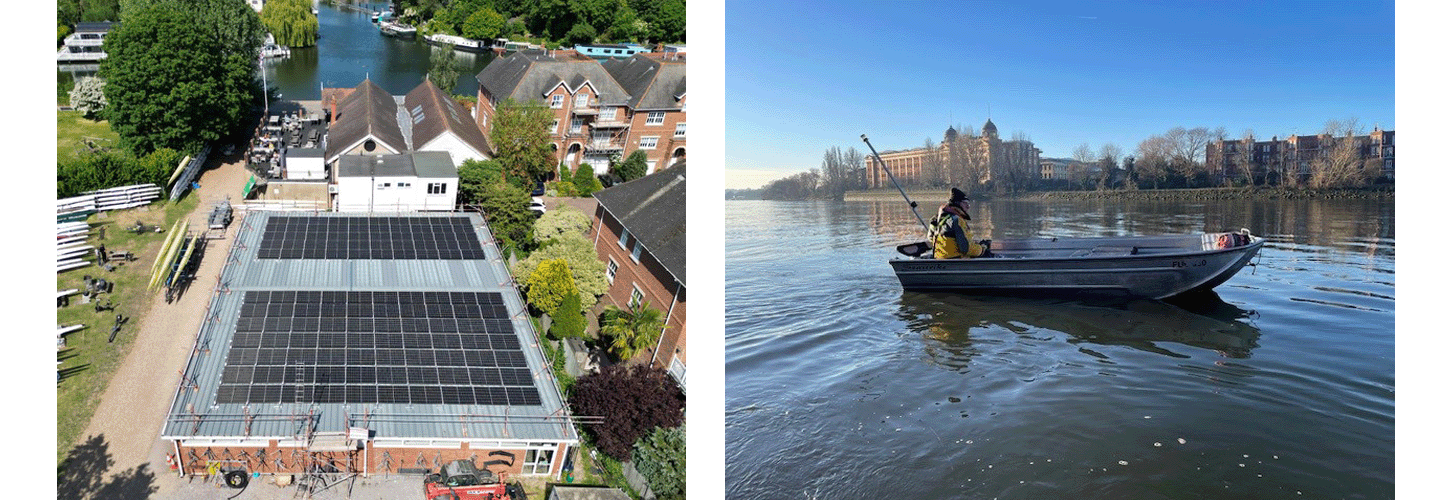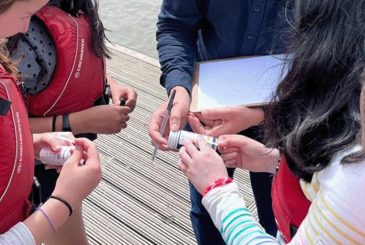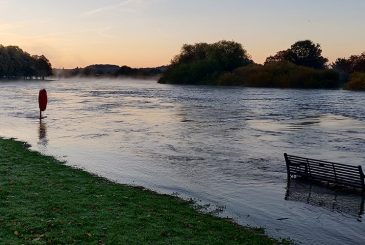Going solar
Recently-built rowing club buildings are often ideal sites for installing photo-voltaic (PV) panels to generate electricity, as they’re generally large in area. Solar thermal panels (where water is warmed directly by the sun) are another option.
PV and solar thermal panels are more effective the further south you are because the sun is higher in the sky. Installation prices have come down in recent years and payback periods reduce as electricity prices go up. That said, lead times have increased since the energy price hikes that began in 2022, due to the popularity of this technology.
Walton RC’s three-part energy system
Walton recently installed a 12kW PV array on the shallow pitched roof of their boathouse, which was built around 2010, along with 20kW of battery storage.
Additionally, when the batteries are fully charged (which will mainly only happen in the late spring and summer), any excess solar power generation is used to heat a hot water cylinder via two immersion heaters. This is a cost-effective use of the excess generation as ‘export’ tariffs (back to the grid) are very low – often as little as 5p per kWh, compared with 32p it costs to buy electricity from the grid.
In the first four months since Walton’s renewable energy system went live in October 2023, they have calculated that they’ve saved nearly £400, despite this being the worst time of year for solar generation. The energy management software also enabled them to identify that the cooling system in their beer store was exceptionally energy-hungry, which they’ve now taken steps to address.
The club has been taking a staged approach to other initiatives that will reduce their carbon footprint. Their first step – prior to installing the PV and energy storage system – was smart thermostats to replace the old programmable ones. These enabled better control over heating the club room and changing rooms as the programming for the old ones had become disorganised over the years. Next on their list is an air source heat pump, which will enable them to stop using gas. The club house is a perfect candidate for a heat pump as all of the heating is underfloor.

Molesey BC installed 120 solar panels in June 2023 on their gym and rowing tank building, which has a flat roof. As the popular community cafe run at the club uses energy during the day – a different profile from many clubs – they’ve replaced the gas hob and oven with an induction hob and electric oven, powered by their own electricity when the sun’s shining enough. Along with the results of ongoing conversion of lighting (striplights as well as bulb fittings) to LED, and management and attention to how they use electricity has reduced general consumption from the grid by around 20% year on year.
Next on their to do list is battery storage for the PV panels. Batteries enable energy generated to be used later – inevitably, lighting is mainly used when the sun isn’t shining, and ovens and hot water are mostly used at rowing clubs in the evening stoo.
You can read other rowing club renewable energy case studies here.
Launch engines
Fulham Reach BC are actively transitioning its coaching boat fleet to electric power using Torqueedo electric motors. They believe that this could remove 14,000kg of CO2 annually.
Towing vehicles
Decarbonising towing vehicles is less straight forward, as for any van or truck. One immediate option to reduce fossil fuel usage when going to competitions is to trailer share with other nearby clubs where possible.
We’d love to hear from you if your club is successfully using an alternatively fuelled vehicle for towing. Get in touch >>










